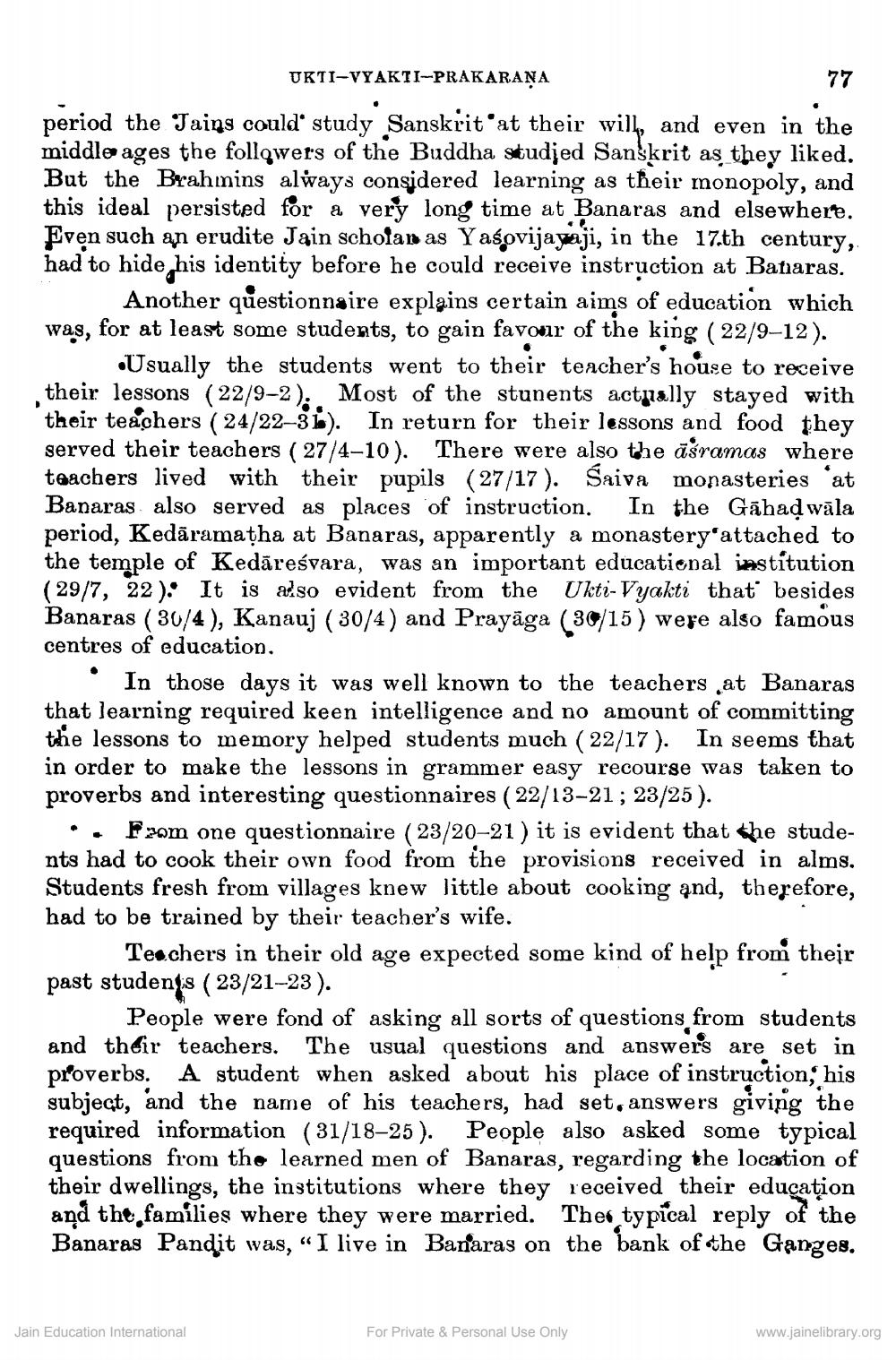________________
UKTI-VYAKTI-PRAKARANA
77
period the Jains could study Sanskrit'at their will, and even in the middle ages the followers of the Buddha studied Sanskrit as they liked. But the Brahmins always considered learning as their monopoly, and this ideal persisted for a very long time at Banaras and elsewhere. Even such an erudite Jain schofan as Yaśovijayaji, in the 17th century, had to hide his identity before he could receive instruction at Bataras.
Another questionnaire explains certain aims of education which was, for at least some students, to gain favour of the king (22/9–12).
Usually the students went to their teacher's house to receive their lessons (22/9-2). Most of the stunents actpally stayed with their teachers ( 24/22–31). In return for their lessons and food they served their teachers (27/4-10). There were also the āšramas where teachers lived with their pupils (27/17). Saiva monasteries ‘at Banaras also served as places of instruction. In the Gāhad wāla period, Kedāramatha at Banaras, apparently a monastery'attached to the temple of Kedāreśvara, was an important educational institution (29/7, 22): It is also evident from the Ukti-Vyakti that besides Banaras ( 30/4), Kanauj ( 30/4) and Prayāga (30/15) were also famous centres of education.
In those days it was well known to the teachers at Banaras that learning required keen intelligence and no amount of committing the lessons to memory helped students much (22/17). In seems that in order to make the lessons in grammer easy recourse was taken to proverbs and interesting questionnaires (22/13-21; 23/25).
.. From one questionnaire ( 23/20–21 ) it is evident that the students had to cook their own food from the provisions received in alms. Students fresh from villages knew little about cooking and, therefore, had to be trained by their teacher's wife.
Teachers in their old age expected some kind of help from their past students ( 23/21-23).
People were fond of asking all sorts of questions from students and their teachers. The usual questions and answers are set in proverbs. A student when asked about his place of instruction, his subject, and the name of his teachers, had set, answers giving the required information (31/18–25). People also asked some typical questions from the learned men of Banaras, regarding the location of their dwellings, the institutions where they received their education and the families where they were married. The typical reply of the Banaras Pandit was, “I live in Banaras on the bank of the Ganges.
Jain Education International
For Private & Personal Use Only
www.jainelibrary.org




